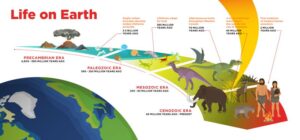Sustainability
 Sustainability is a complex term. In some ways, it is too broad and general to be meaningful. In other ways, it is an umbrella for many important but otherwise disparate concepts, which, put together, will determine the future of life on the planet.
Sustainability is a complex term. In some ways, it is too broad and general to be meaningful. In other ways, it is an umbrella for many important but otherwise disparate concepts, which, put together, will determine the future of life on the planet.
The term means different things to different people. I think “sustainability” in the 21st century is like “computers” in the 1970’s. It is still an intellectual concept, mostly talked about by professors and geeks, but there are more and more people trying to implement it in their garages, and eventually it will govern or be an aspect in most business practices, and how people do things every day. Sustainability describes a new way of doing things, but most people will only be able to relate to it through its specific applications (food, products, activities as opposed to public policy or organizational structures). In the last 5 years, sustainability is being taken up by business people and beginning to be more mainstream, and could (should?) be the basis for the next industrial revolution.
Here are some approaches to sustainability:
Stop the bad things | Do good things |
Prevent the planet from being destroyed- Avoid Jared Diamond’s “Collapse” | Heal the planet |
Don’t use up all the Earth’s resources in the next 50 years | Give future generations the same opportunities that we’ve had |
Stop acting like humans are the only species that matter | Value other species |
Reduce greenhouse gas emissions | Support renewable energy, sustainable transportation options, and low-carbon lifestyles |
Stop polluting our air, water, land, etc. | Organic, clean technologies, products, industries |
Stop exploiting the Third World, help the poorest people, reduce poverty, etc. | Environmental justice and social equity |
Stop War | Promote Peace |
There are several steps I’ve noticed in the learning curve of sustainability:
- Realizing there is a problem. Just like in a 12-step program, this is the first step.
- Trying to reconcile the new information with the old worldview. This leads to the triple-bottom line: social, environmental, and economic values. It also leads to the Venn diagram, where there are three circles, representing those values, and the “sweet spot” is where all three overlap. I think this is a useful but simplistic approach to sustainability. Some people (especially people whose livelihoods are entrenched in the status quo) only get this far, decide they now understand sustainability, and continue with business as usual.
- The Ecological Footprint. This is a wake up call for people in the United States. If you extrapolate the lifestyle of most Americans to the entire world, we would need 4 planets to provide the resources we use. For some Americans, their Ecological Footprint is 20 planets. Whoa. Houston, we have a problem.
- Somewhere around this time, the old Venn diagram gets replaced by a bulls-eye target. The center is the economy, and the outer ring is the environment. This is a more accurate concept for sustainability. It requires a little more intellectual freedom, because it calls into question some economic assumptions (that the environment is an externality, when in fact, the economy is wholly dependent on the environment).
- CO2: The Ultimate Sustainability Indicator. I believe CO2 is an even better indicator, because it is not a metaphor. It is the actual, measurable emissions generated from fossil fuels that you and I are creating due to an energy infrastructure that is unsustainable. CO2 pinpoints the problems, and gives us an idea of how to fix it. So, the problem isn’t the driving to your grandmother’s house on Sunday. The problem is the fuel you put in your car to get there. If you can ride your bike there, you’d addressed the problem.
Sustainability often comes loaded with baggage. Is the world headed for imminent disaster? If so, your timeframe for long term sustainability may be measured in decades or years, as opposed to centuries or millennia. Has the world seen situations like this before and survived? Is so, then sustainability may be a luxury good, to be purchased only after you have achieved your other goals (such as economic growth). What is a tolerable amount of “unsustainability”? Using any oil or petroleum whatsoever? Using just under the threshhold for permanent damage to the Earth’s climate? Using the minimum amount of fossil fuels to allow for Less Developed Countries to “catch up”? Do you like science? Do you prefer social science? What is your general political frame, according to George Lakoff: strict father, or nuturant parent? These considerations and more will give you a definition of sustainability, which may be as unique as your fingerprint.
Even so, the term is a powerful description of the changes we need to make, and the goal we need to pursue in our economy and culture.
Other terms that have arisen alongside sustainability include:
Carbon neutral, or carbon negative
Degrowth – the idea that the economy is already too big to be sustainable, and need to degrow in order to achieve a sustainable throughput level
Links:
UN Sustainable Development Goals https://sdgs.un.org/goals
Permaculture https://www.sustainable.com.au/permaculture and here https://www.permaculturenews.org/
Article on Regenerative Permaculture at Resilience.org https://www.resilience.org/stories/2015-11-02/permaculture-regenerative-not-merely-sustainable/
- Donella Meadows archive http://donellameadows.org/archives/definition-of-sustainability/






